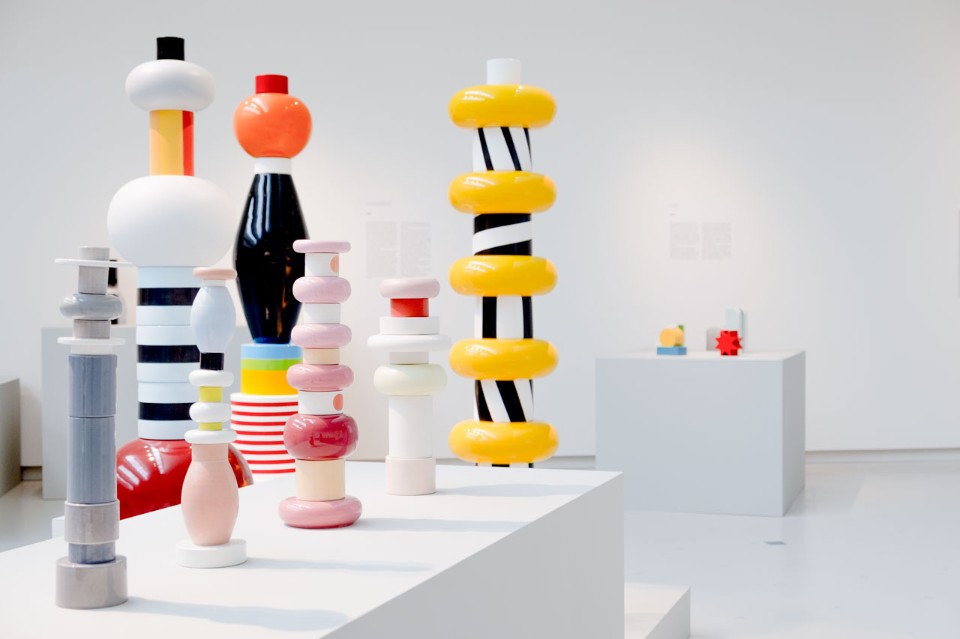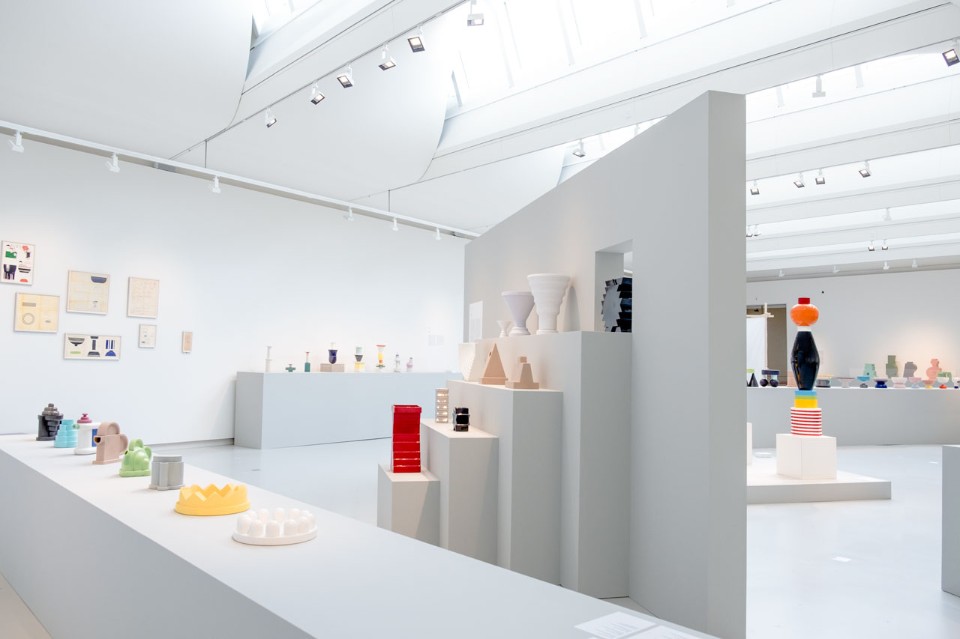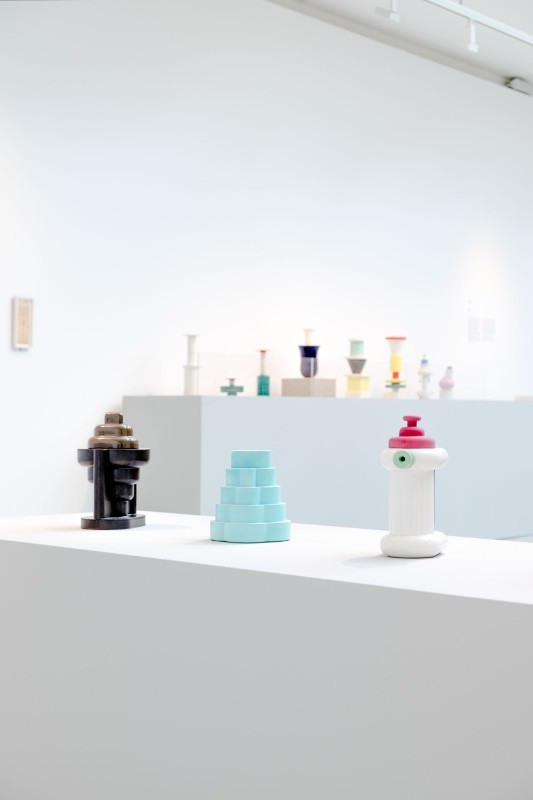What do Ettore Sottsass and the Netherlands have in common? The Stedelijk Museum in ’s-Hertogenbosch tries to respond to the question with “Celebrating Ceramics – 100 jaar Ettore Sottsass”. The Flemish exhibition – along with many initiatives for Sottsass’s 100th celebration – is particularly intriguing: not only for the number of works on display, but more so for the participation of a young Italian designer, Francesco Zorzi, who has unravelled the master’s visual apparatus and graphical contents. Invited to give shape to a vision, to a graphic and spatial representation, Zorzi has attempted to shed light on the humanistic dimension – amidst existential questioning and cultural creative restlessness – which nurtured Sottsass’s ceramic art (and not only). What results is an intermingling of stories and ideas that provides, in some ways, an indirect, never-before-seen portrayal. We met up with Zorzi to learn more about the themes of his project.
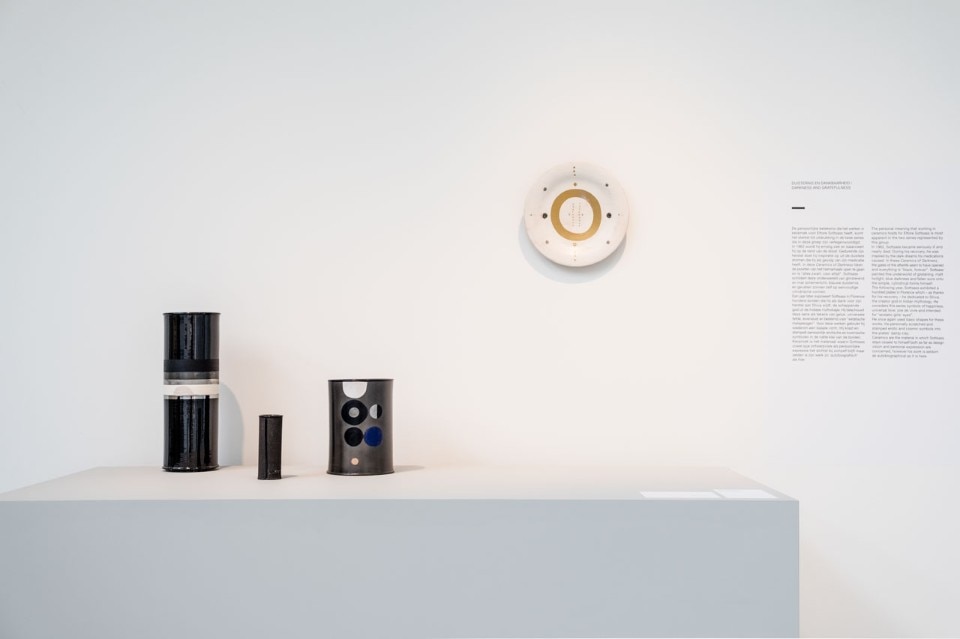
 View gallery
View gallery

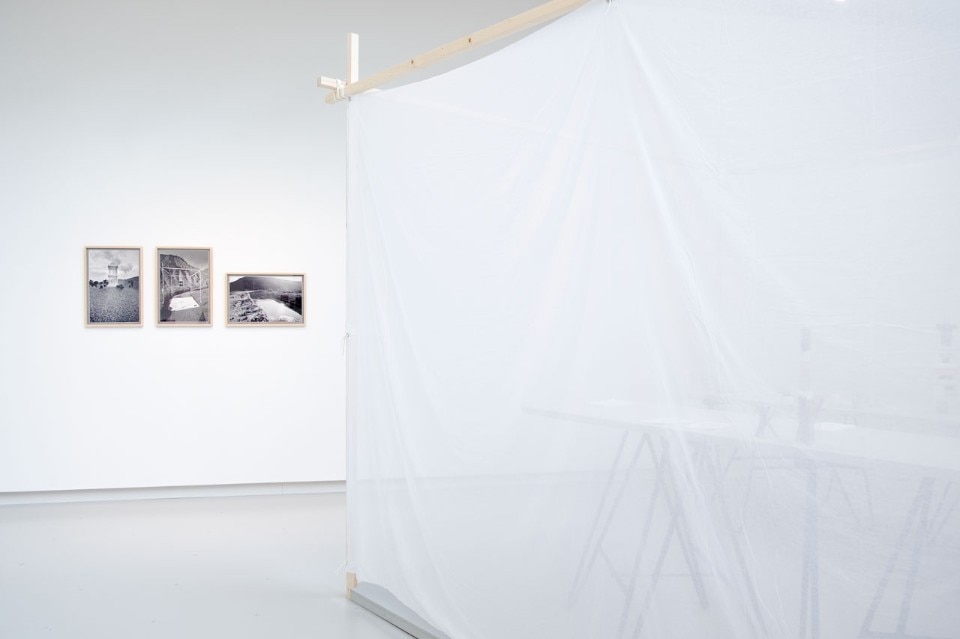
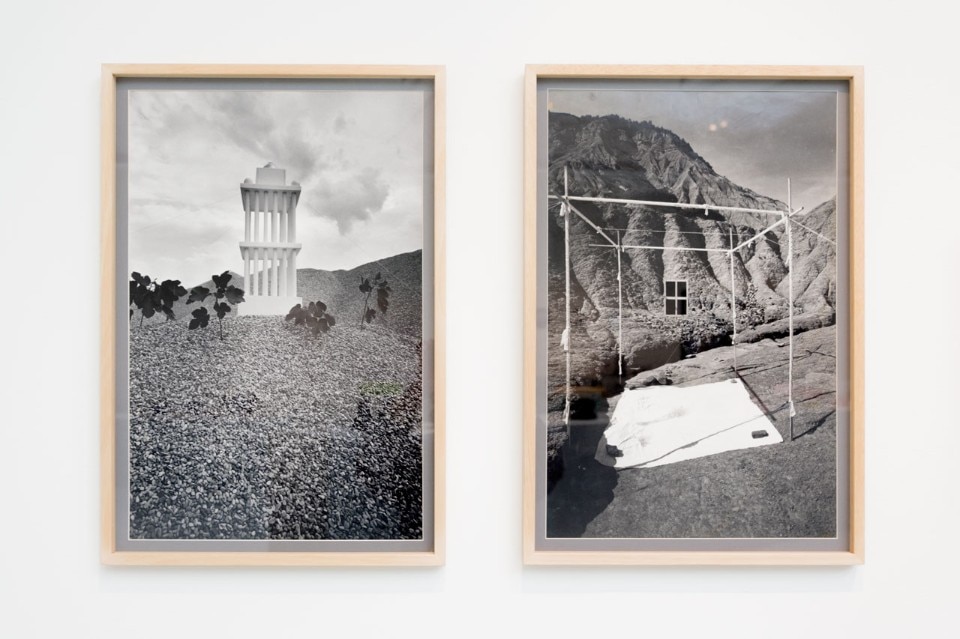
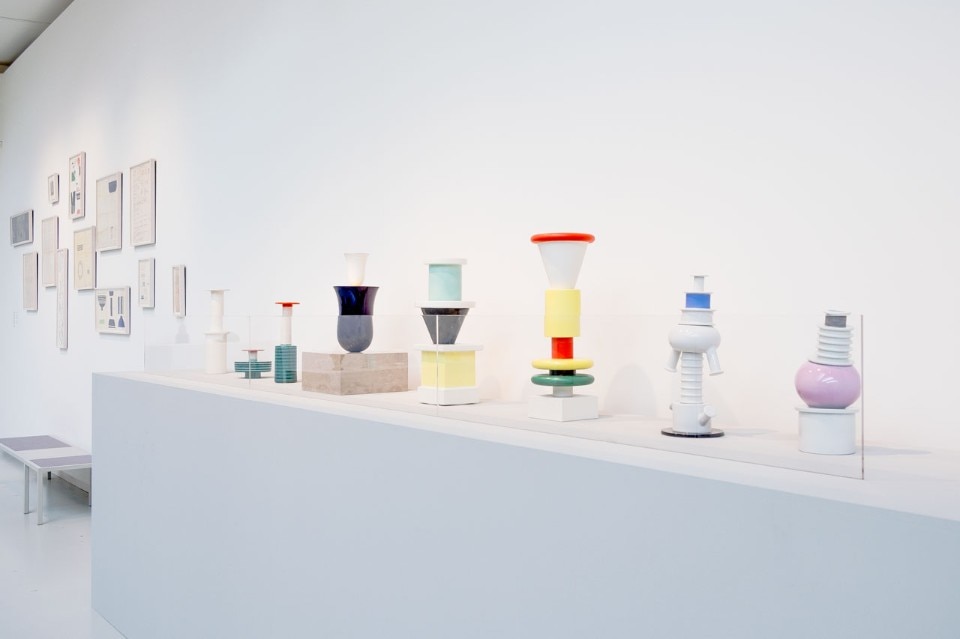
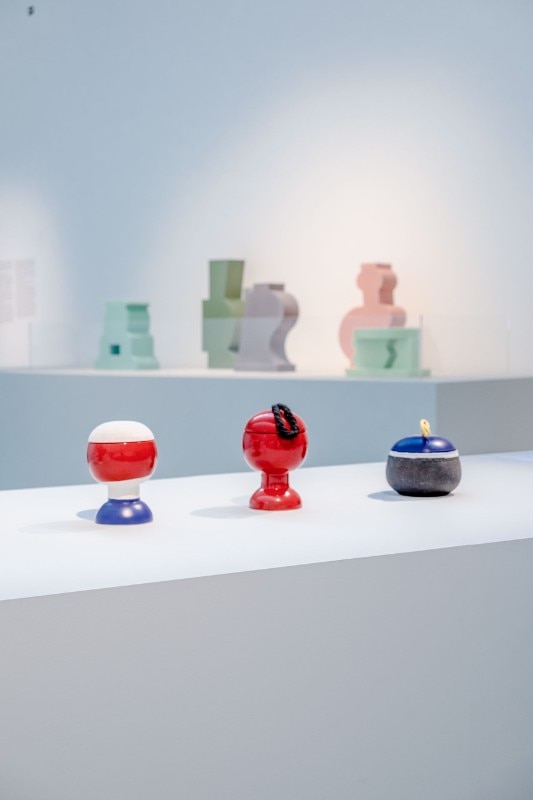
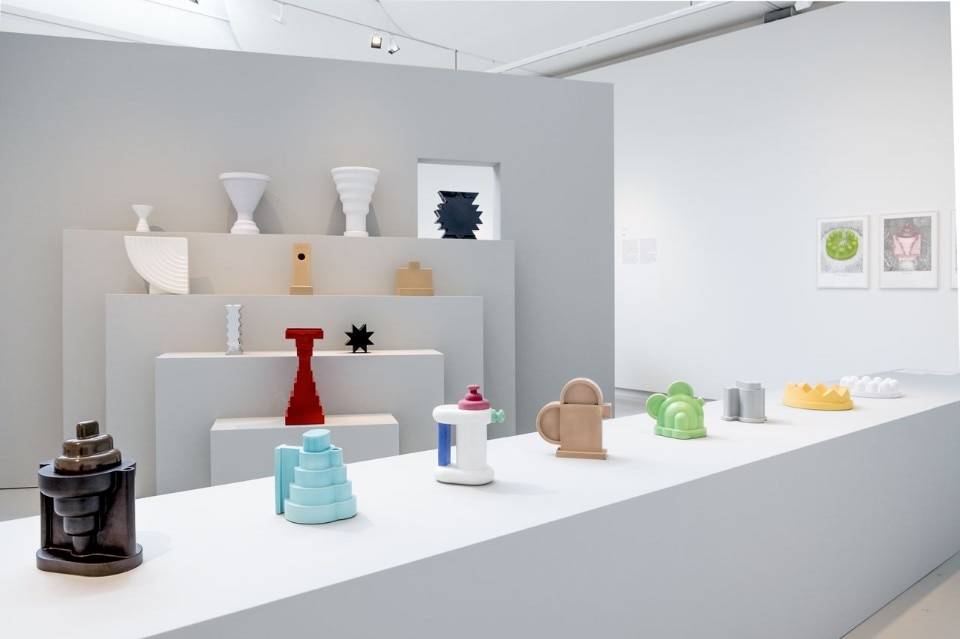
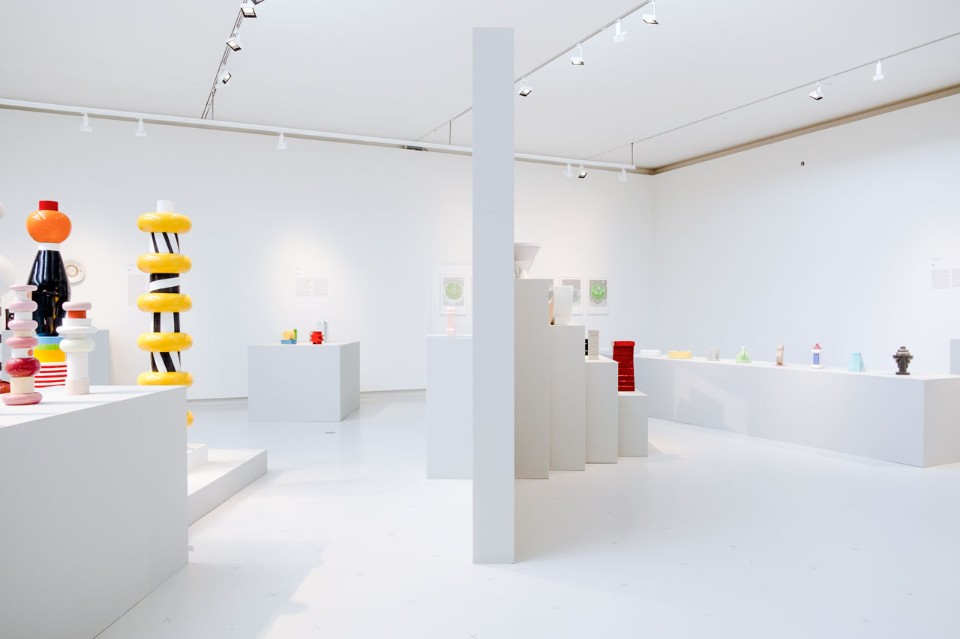
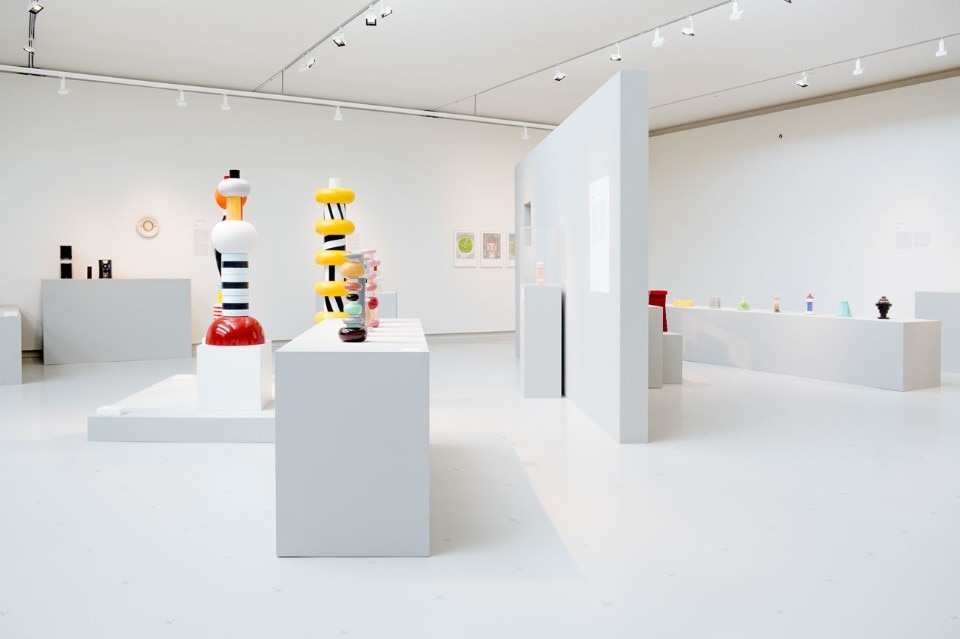
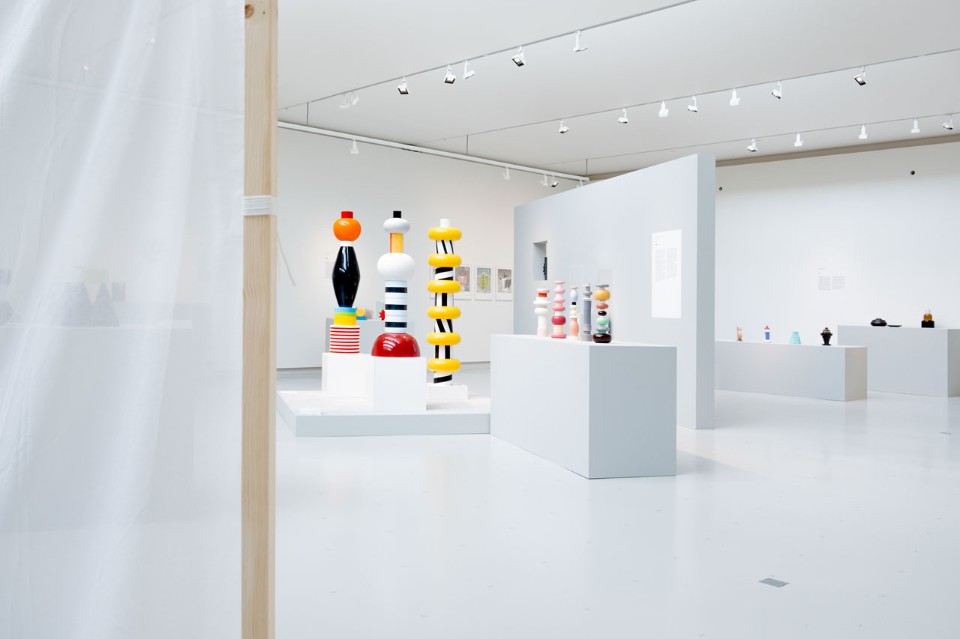
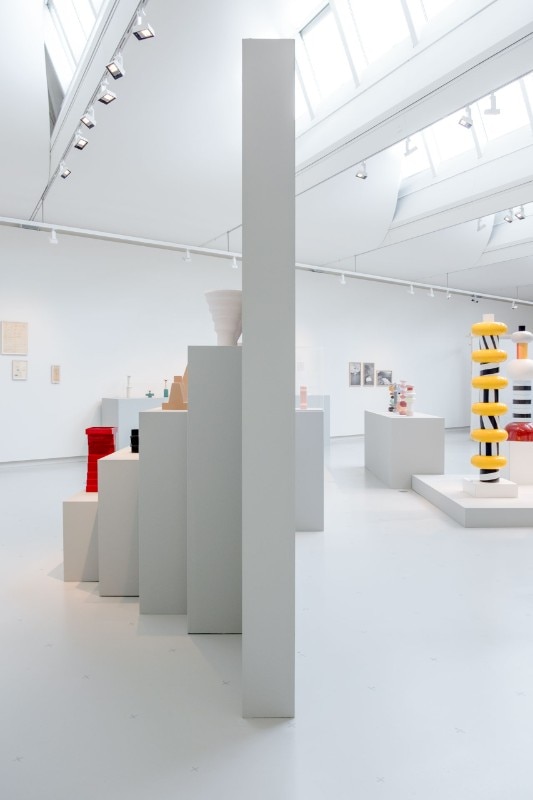
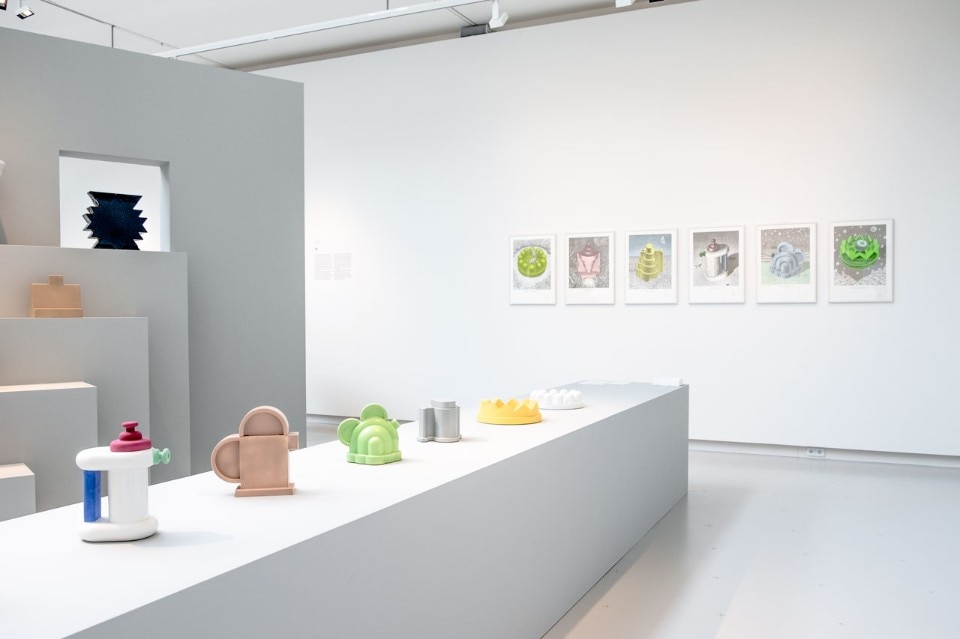
Marco Petroni: How did your collaboration with the Stedelijk Museum in s-Hertogenbosch come about?
Francesco Zorzi: I met Fredric Baas, the museum’s collection curator, while I was a design assistant at Studio Formafantasma. Baas was interested in my creative language and, thinking it would fit in well with the contents of an exhibition he was preparing on Sottsass’s ceramics, he asked me to work on the exhibition design.
Marco Petroni: What approach did you take to Sottsass’s ceramics and, more in general, to his figure?
Francesco Zorzi: The show focuses on a small part of Sottsass’s practice, the ceramics, the works in terracotta and porcelain that belong to the museum’s collection. A sense of respectful questioning gave shape to the entire course of research and, in a certain sense, to the exhibition itself. It wasn’t so much reverence for a master but rather a certain sense of duty – as an Italian working in the Netherlands, in Amsterdam – in trying to shed light on those aspects of Sottsass that are not well known. Sottsass explored ceramics far and wide, with great variety and fecundity. It’s a sign of his special love for this material and its qualities related more to man than to the object in itself: a tactile material, with infinite possibilities in changing form, volume, scale, skin: from unglazed biscuit to glazing, to industrial enamels, to scratches, to engravings. Also, to the out-of-scale, stacking up different volumes and then joining them in a new game.
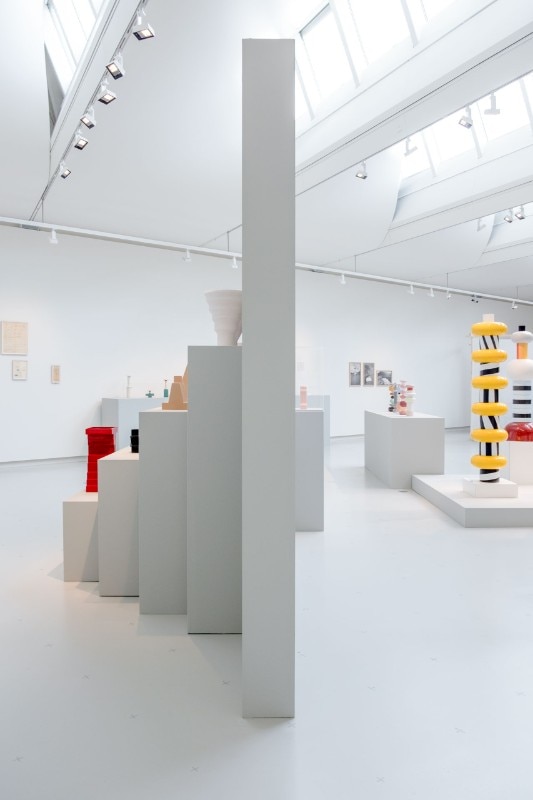
Marco Petroni: Sottsass’s success has deep roots in the Netherlands, where he played a pivotal role in the birth of so-called Dutch Design. How is his work perceived today and which aspects did you want to convey to the public?
Francesco Zorzi: We kept our distance from the umpteenth event dedicated to the Postmodern and the extravagant coloured objects designed by Sottsass. This exhibition is an important opportunity to discuss his ideas as a man: an artist, a person, a painter, an architect and an intellectual. I tried to convey the image of a more complex Sottsass. To make people understand that in the design of his objects, life and the natural instinct to head in a new direction, without following pre-established plans, play an important part.
Marco Petroni: Sottsass wrote a lot, reflecting on design and on life, and often these two are connected. Your work was a bit like “translating” an enormous practice. A difficult and stimulating task. How did you experience it?
Francesco Zorzi: I devoured every writing, text, note, article and book I was able to lay my hands on, while I started jotting down thoughts and ideas. I created a kind of personal archive, assembling many small stories, which help to better define the reasons for certain choices, forms, colours, continuity and rifts. The works on display are divided according to some large sets with blurred edges: not only by type or time, but also searching for other leitmotifs in Sottsass’s work, like Painting’s influence, Galleria Il Sestante, darkness & Gratefullness, Evolution of shapes, USA & the West, Tools for life, India & the East, Smoke ceramics, Stacking, Ruins. This division outlines an open course where you perceive a dimension that allows you the freedom to make other connections and references.
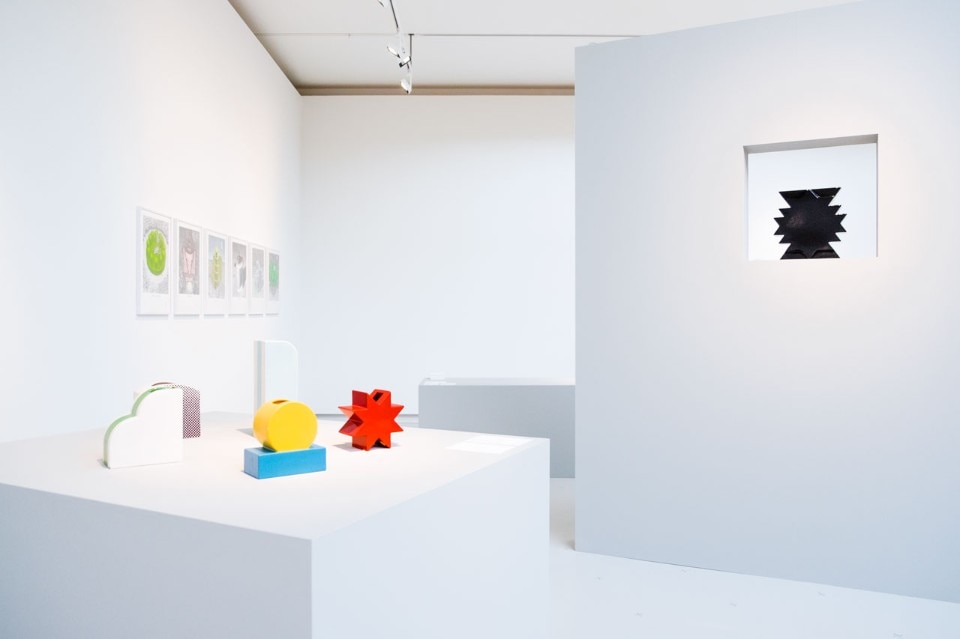
 View gallery
View gallery

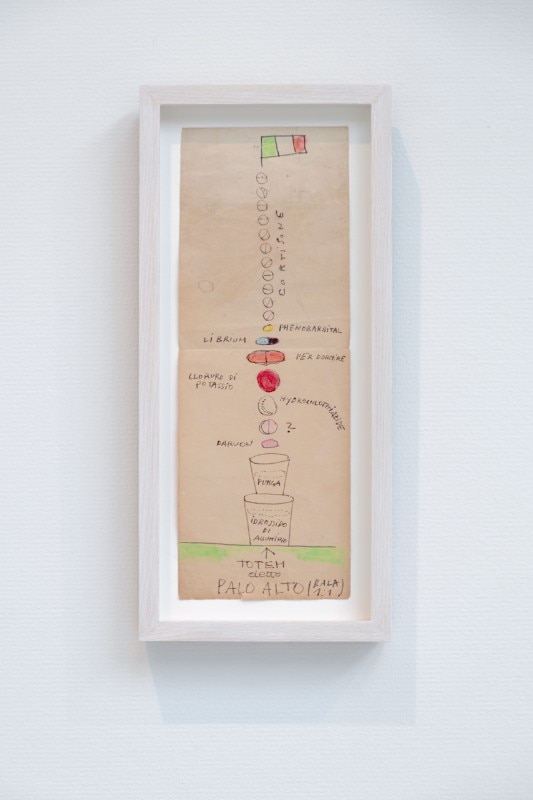
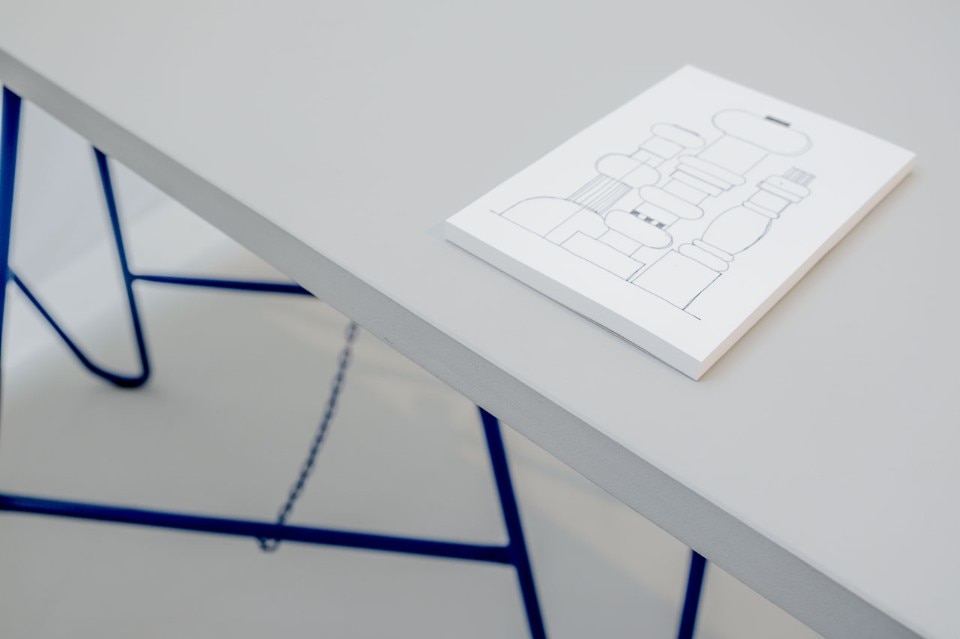
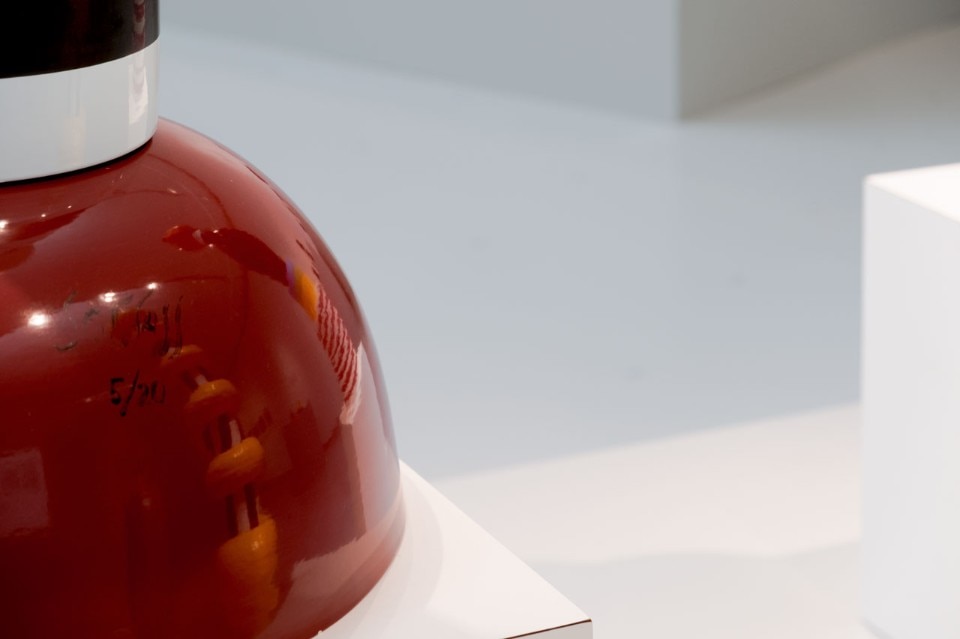
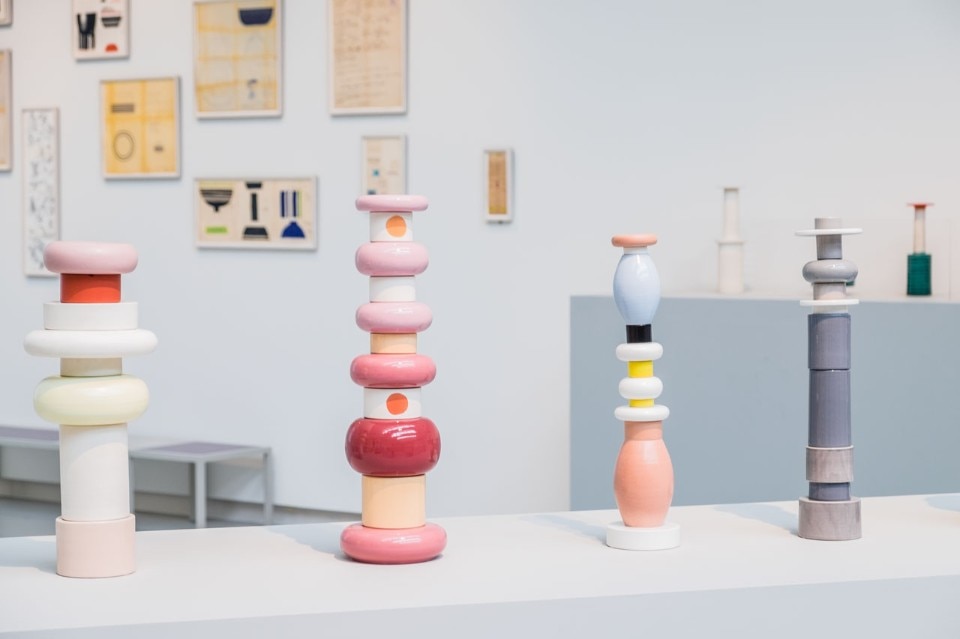
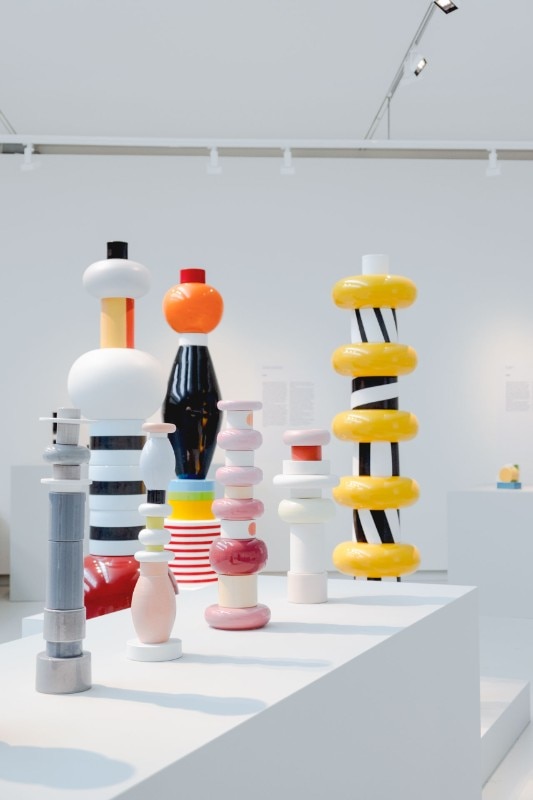
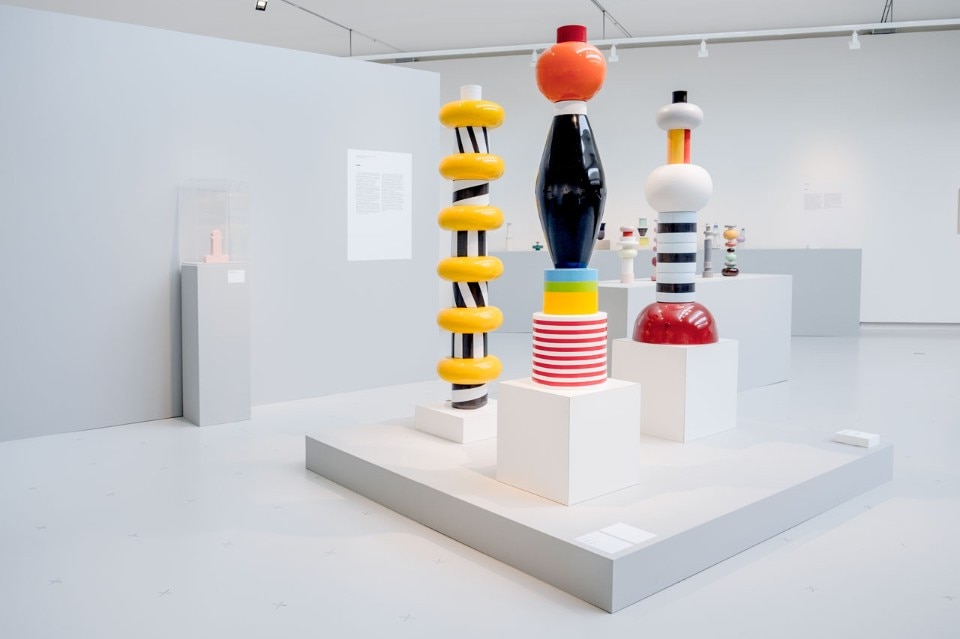
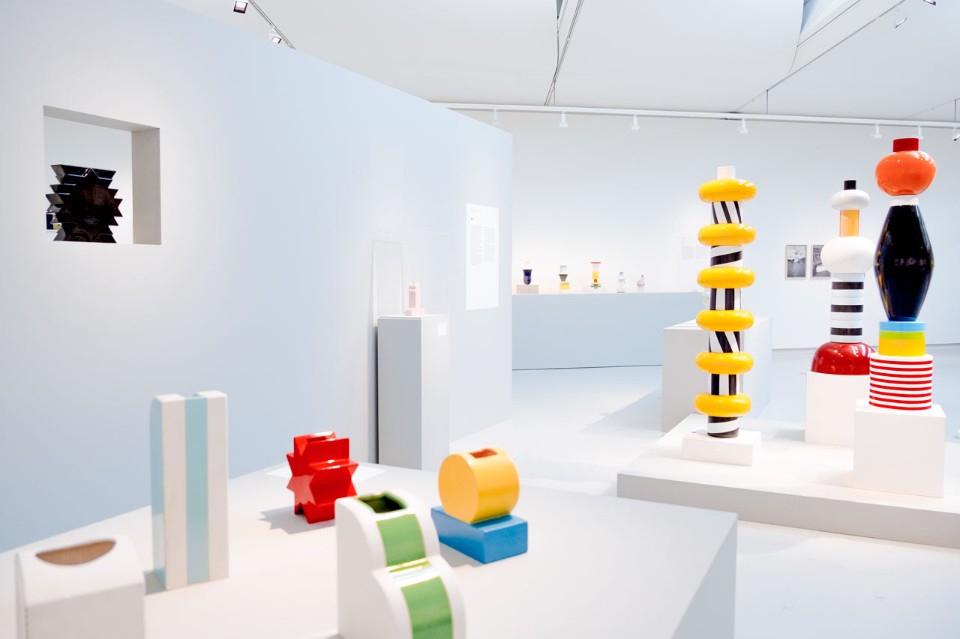
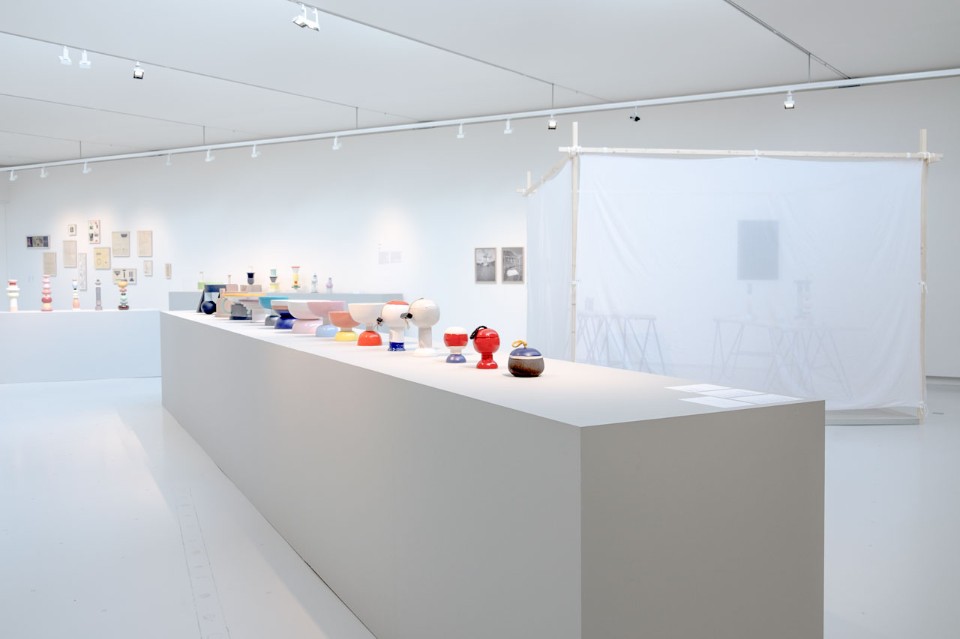
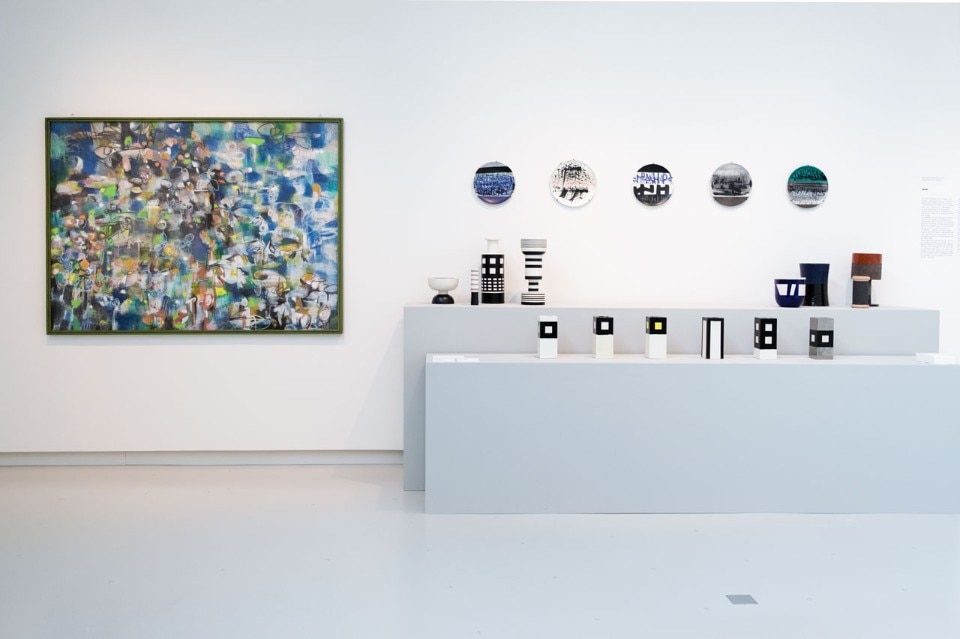
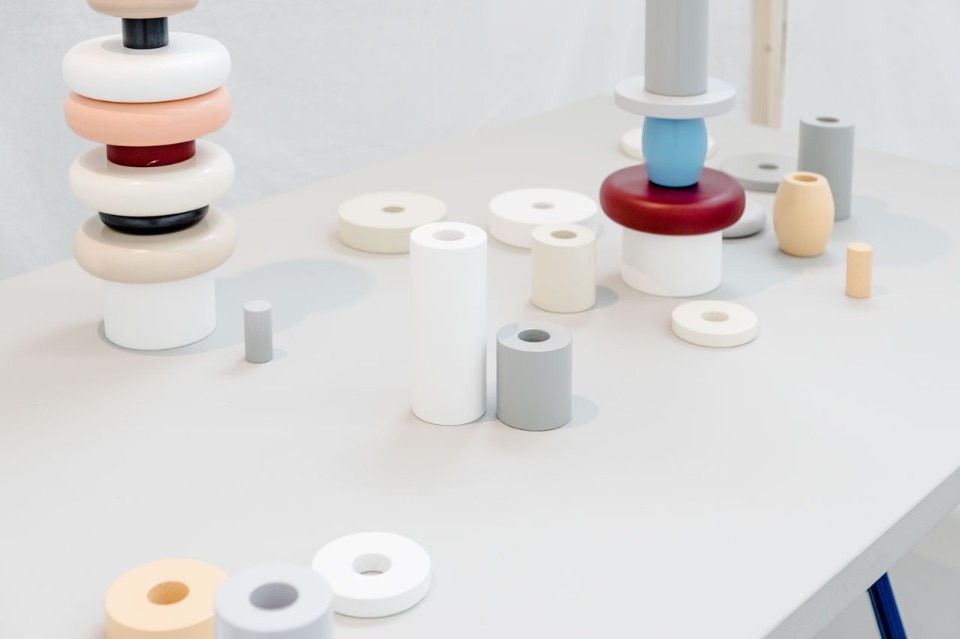
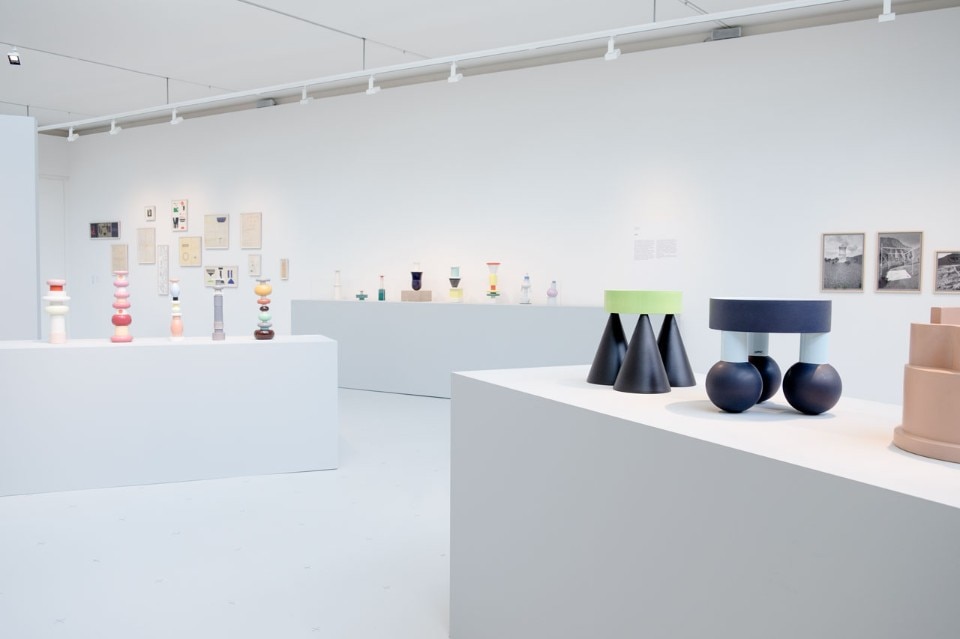
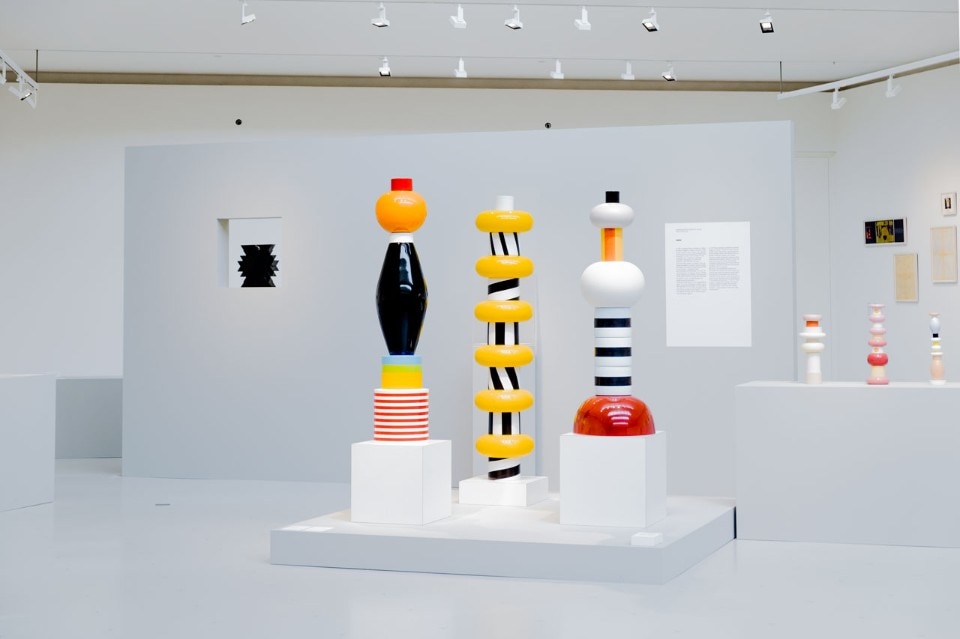
Marco Petroni: What was your visual and graphic approach to the world of Sottsass?
Francesco Zorzi: The exhibition design is quite coloured. The theme of colour always has a central role in Sottsass’s world of ceramics. Visual communication is based on a collage of profiles of some of his most celebrated ceramics, revisited through a colour palette more attuned to India, while the exuberance of the venue is left to the bold tones of the industrial enamels that clash with the neutral grey of the installation itself. I made a series of blocks and structures that lead visitors through an itinerary that slowly reveals the works; among these, a central partition separates the American influence from the Indian one and a long block hosts the development over time of the idea of the container. One way of showcasing the many Sottsasses.
Marco Petroni: After this intense work on Ettore Sottsass, what have you discovered that you think is important to emphasise in his work?
Francesco Zorzi: His way of understanding design, his reckoning with the subconscious, the risks, the unknown factors of the risks bear witness to his courage of going against tradition, reconsidering it in a totally new way. At this historic moment in time, I believe that examples of this kind are important, because they show how often we need to recombine the ingredients of an old recipe in order to break the mould, running the risk of not being understood.
© all rights reserved

- Exhibition title:
- Celebrating Ceramics: 100 years of Ettore Sottsass
- Opening dates:
- 14 September 2017 – 6 January 2018
- Curator:
- Fredric Baas
- Graphic and exhibition design:
- Francesco Zorzi / No – Rocket


